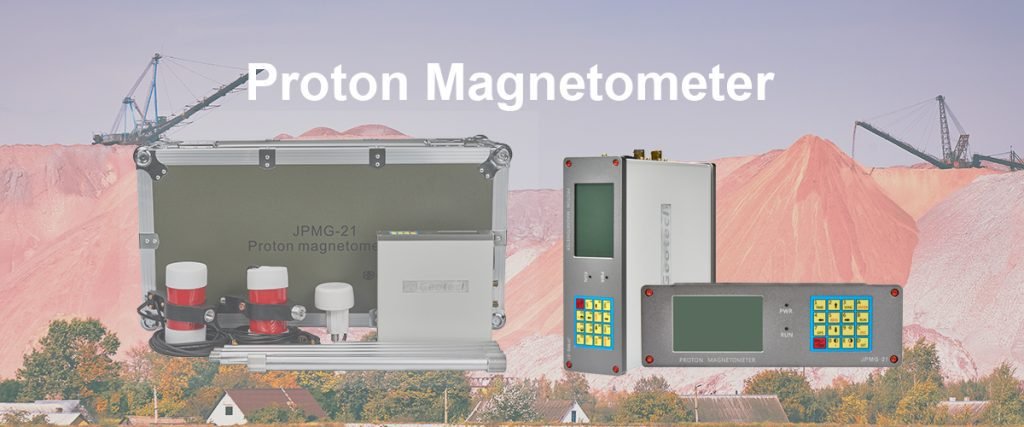Welcome to Geotech!

How Stable Is Your Proton Magnetometer? A Deep Dive into Reliability
TIPS:As magnetometer technology advances, the demand for stable and reliable field performance grows. The proton magnetometer is widely praised for its sensitivity, but how does it perform under real-world conditions? This article explores how magnetometer stability is influenced by environmental factors and how thermal compensation improves the long-term accuracy of the proton magnetometer. Understanding the reliability of your magnetometer is essential for ensuring accurate geophysical survey results.

Ⅰ. Introduction: Why Proton Magnetometer Stability Matters
As geophysical surveys push into more extreme environments, the stability of proton magnetometers has become a critical factor for accurate data acquisition. These instruments must maintain reliable performance across temperature fluctuations, magnetic interference, and long-term operations. This article focuses on how to evaluate, optimize, and ensure the reliability of proton-based magnetic sensors under varying field conditions.
Ⅱ. Understanding the Basics of Proton Magnetometers
Proton magnetometers—also known as proton precession magnetometers—operate by aligning hydrogen nuclei in a fluid and measuring the precession frequency after the alignment field is removed. Their simplicity and precision make them widely used in geological mapping, archaeology, and UXO detection.
But like all instruments, their reliability depends on multiple factors, especially in rugged or unstable environments.
Ⅲ. Factors Affecting Magnetometer Stability
1. Environmental Conditions
External factors influencing magnetic sensors include:
- Magnetic field noise (e.g., nearby metallic structures or power lines)
- Shock and vibration during transport
- Humidity and dust in tropical or desert regions
These can disrupt sensor readings and decrease operational stability.
2. Temperature Compensation in Magnetometers
Temperature variation is one of the most influential environmental impacts on magnetometers. Without proper thermal compensation, readings may drift significantly.
Solutions:
- Use sensors with automatic temperature-related adjustment
- Apply software correction using onboard environmental data
- Encapsulate electronics in thermally stable housings
Ⅳ. Long-Term Operation and Reliability
Long-duration field surveys or continuous monitoring projects demand:
- Sustained use of proton magnetometer with minimal calibration
- Robust power systems (solar or battery packs)
- Internal diagnostics for error detection and prevention
Proper storage, firmware updates, and periodic recalibration are essential for keeping long-term proton magnetometer performance consistent.
Ⅴ. Testing and Validation Methods
To evaluate the reliability of proton magnetometers, engineers and researchers apply rigorous tests:
- Thermal Cycling Tests: Simulating field temperature extremes
- Shock and Vibration Tests: Ensuring hardware durability
- Magnetic Interference Exposure: Testing resilience against electromagnetic pollution
- Calibration Drift Analysis: Measuring deviation over months of usage
Ⅵ. Real-World Application Scenarios
- In the Arctic, where temperatures vary from -40°C to +10°C, proton magnetometers with thermal compensation perform better than uncompensated sensors.
- During desert pipeline surveys, heat-resistant enclosures ensured the equipment stayed stable under 50°C ambient temperatures.
- For archaeological mapping, devices with auto-calibration maintained data integrity across multi-week projects.
Ⅶ. How to Select a Reliable Proton Magnetometer
When choosing a system for long-term or harsh-environment deployment, consider:
- Built-in temperature sensors and compensation modules
- Field-proven rugged design (IP67 or higher)
- Extended power duration (≥8h battery life)
- Logging capacity and diagnostics features
- Support for environmental monitoring integration
Ⅷ. Conclusion
A stable and reliable proton magnetometer is more than just an instrument — it’s your survey team’s most trusted partner in the field. With advancements in temperature compensation, rugged design, and error correction, modern magnetometers can now operate seamlessly in environments once thought impossible. For consistent results and accurate geomagnetic data, investing in proven stability ensures long-term success.
Reference
- Society of Exploration Geophysicists (SEG) https://seg.org/
- Society of Environmental and Engineering Geophysicists (EEGS) https://www.eegs.org/
- Geology and Equipment Branch of China Mining Association http://www.chinamining.org.cn/
- International Union of Geological Sciences (IUGS) http://www.iugs.org/
- European Geological Survey Union (Eurogeosurveys) https://www.eurogeosurveys.org/
-1.png)

